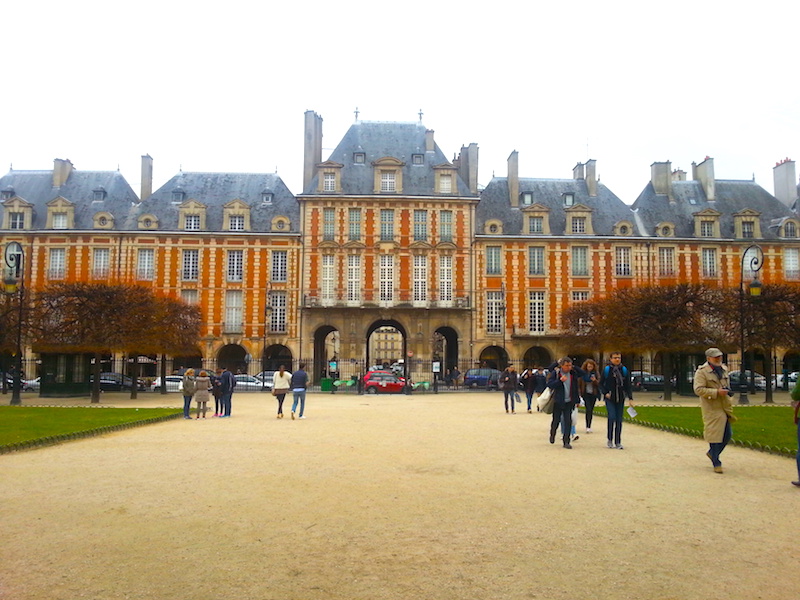
The Place des Vosges does not strictly speaking fall within the Versailles Century time period (1682-1789), as it was built between 1605 and 1612. In other words, construction started in the reign of Henri IV and finished early in the reign of Louis XIII. The connection to the latter king, however, is enough of a justification to write about it here, I feel, since Louis XIII actually built the original chateau at Versailles.
In fact, according to French Wikipedia (from which I get most of my information for posts of this type), the square was inaugurated with a carrousel (ie. a large-scale equestrian performance) in honour of Louis XIII’s wedding to Anne of Austria, who, despite her name, was a Spanish princess. In 1639, a statue of Louis XIII was put up in the centre of the square. It was pulled down during the Revolution, but a new one by the sculptors Dupaty and Cortot was erected in 1825. It’s still there.
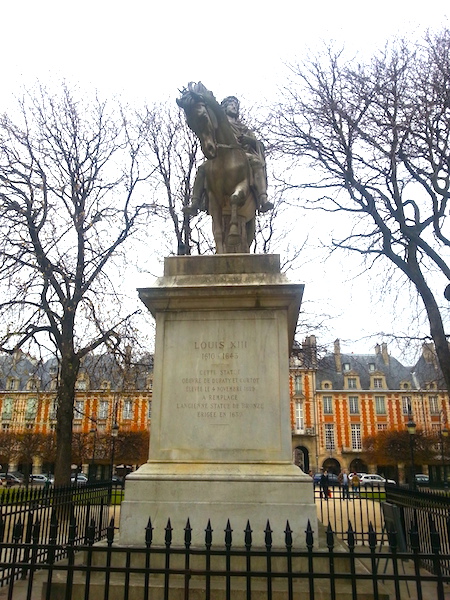
Monument to Louis XIII in the Place des Vosges.
When I visited Paris a year ago this week, I made straight for the Place des Vosges. It did not disappoint. The distinctive red brickwork faced with stone that is so typical of the Louis XIII period has the advantage of looking good even on an overcast day.

View towards the Pavillon de la Reine.
The square truly is a square, measuring 140m on each side (again according to French Wiki). The centre of it is occupied by a public park with lawns, trees, and fountains. The greenery was not always here, though. When it was first built, the square consisted only of sand because it was used for tournaments and carrousels. It was not until the reign of Louis XIV, in 1670, that grass was planted. The trees were not added until after the Revolution.
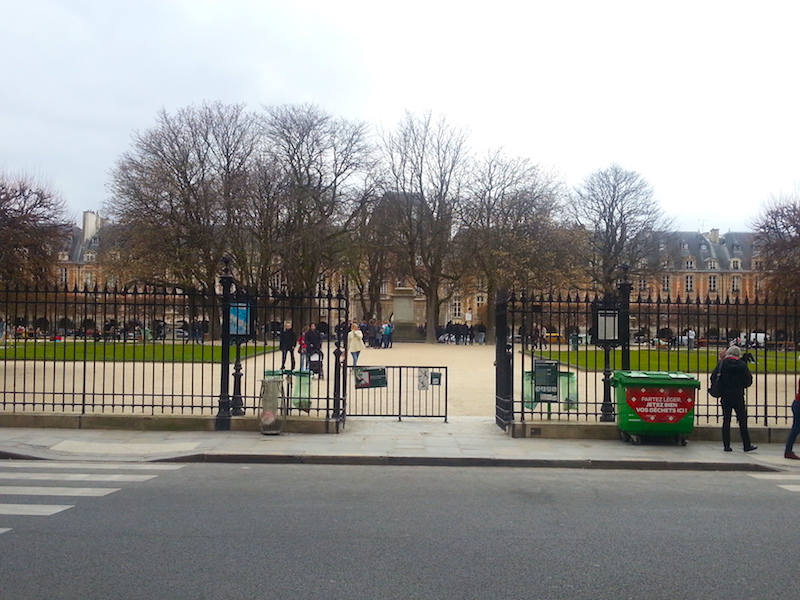
One of the gates into the park in the centre of the Place des Vosges.
Nowadays you have to go through one of the gates in the iron fence to enter the park.
Before the Revolution, the square was called the Place Royale. During the 1st Republic, the Directory, and the Consulate, several different names were tried. It was not until 1800 that the consuls hit on the name Place des Vosges, which is the one that has stuck despite reversions to Place Royale during the Restoration and the 2nd Empire.
One of the lovely features of the square is that the buildings all have arcades that are open to the street. This is especially useful in the rain, as I learned when a downpour started while I was sitting in the park.
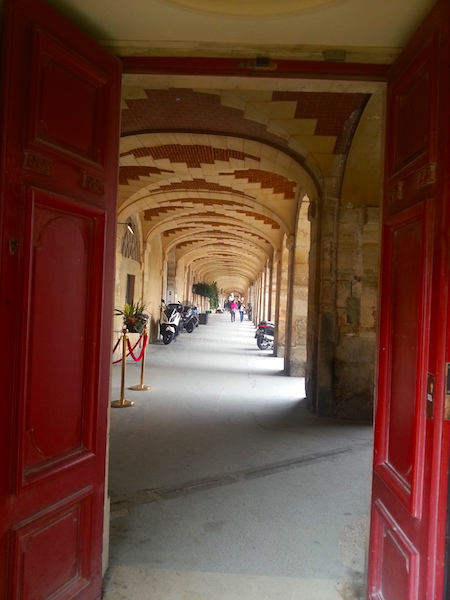
An arcade along one side of the Place des Vosges.
I took the photo above looking into the arcade from the garden of the Hôtel de Sully, which adjoins the Place des Vosges on one of its corners. I’ll never forget my first view of the Hôtel when I stepped through those red doors…
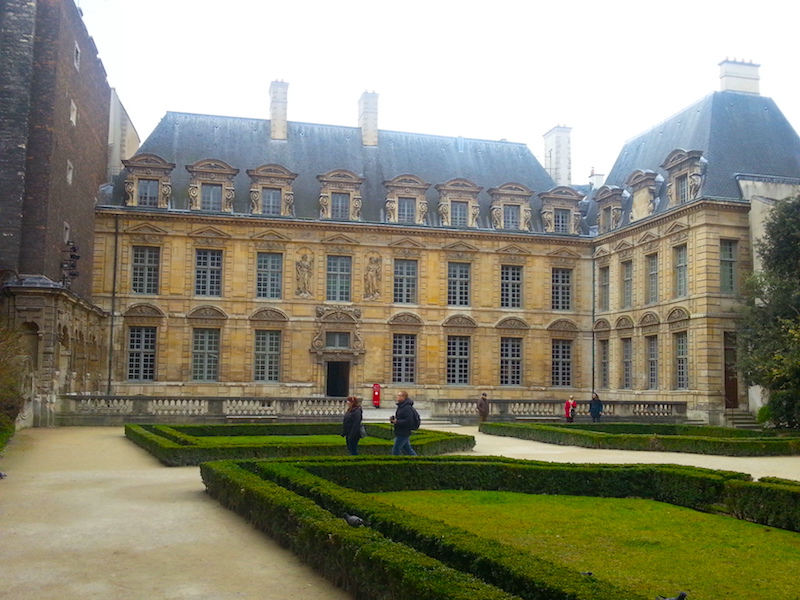
The Hôtel de Sully seen from a gate of the Place des Vosges.
The impact was partly from surprise. I knew that the Hotel de Sully was somewhere nearby, but I hadn’t grasped that it was practically attached to the Place des Vosges.
Over the centuries, many famous people have lived in the Place des Vosges, including such luminaries as Victor Hugo. Of particular interest to Versailles Century (1682-1789) aficionados may be these two names: Mme de Sévigné and the Duc de Richelieu. The celebrated letter writer Mme de Sévigné was born Marie-Chantal de Rabutin in a house overlooking the square. There is a plaque commemorating the event.
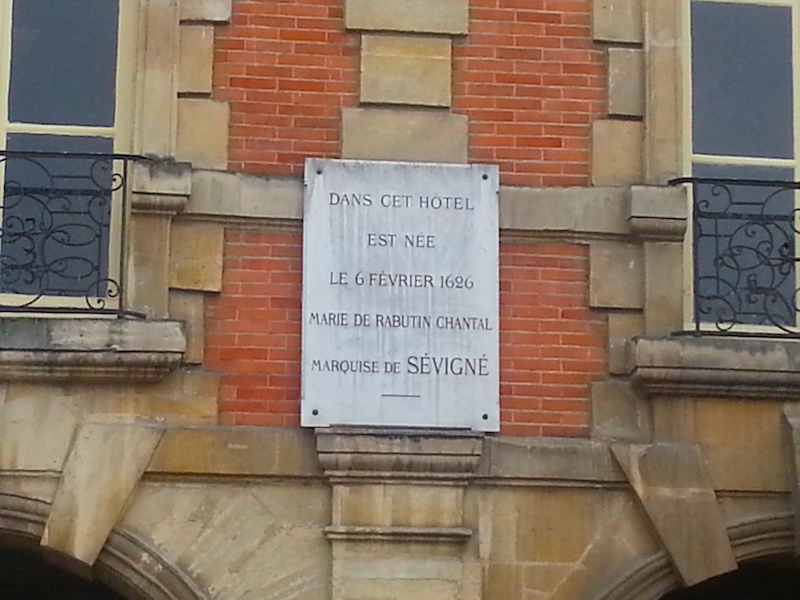
Plaque commemorating the birth of Mme de Sévigné on a house in the Place des Vosges.
The Duc de Richelieu (1696-1788), actually the 3rd duke, was Louis XV’s friend and partner in crime. His house was at #21. The panels from his Chinese salon are today on view at the Carnavalet Museum, or rather they would be if the museum were not closed until 2019 for renovations.
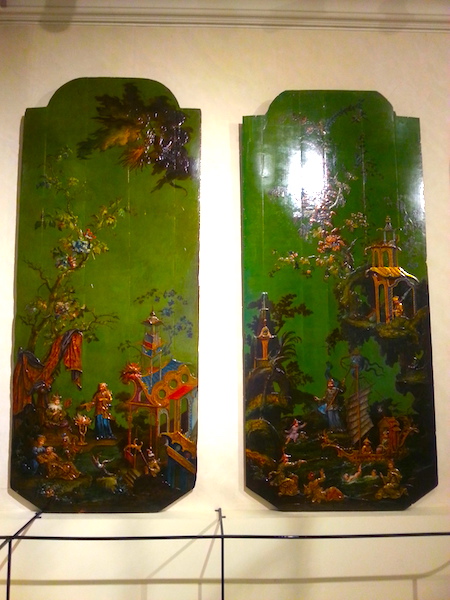
Chinoiserie panels from the 3rd Duc de Richelieu’s townhouse in the Place des Vosges, now in the Carnavalet Museum.
I wrote an earlier series of posts about the Versailles Century treasures of the Carnavalet Museum. If you’re interested, I encourage you to check them out.
I hope you’ve enjoyed this visit to the Place des Vosges. Have you been there? Please share your impressions below, on the Versailles Century Facebook page, or under a relevant image in our gallery on Instagram (@versailles_century).







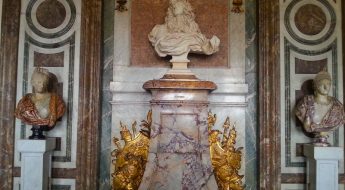
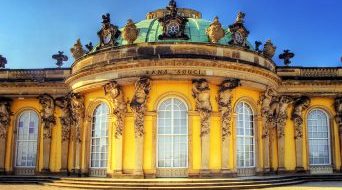
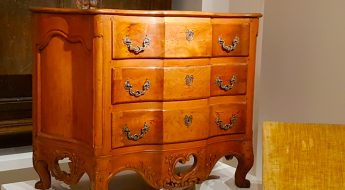








Leave a Comment